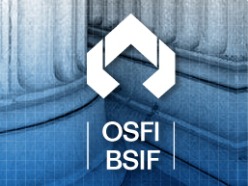 I suspect everyone in our industry is familiar or has some basic understanding of OSFI’s responsibilities. The Office of the Superintendent of Financial Institutions is an independent agency of the Government of Canada, and the agency reports directly to the Minister of Finance. OSFI’S mandate? Simply stated OSFI’S role is to ensure that Canadians have confidence in the financial system. Given what’s transpired in the rest of the word since 2008, I suspect Canadian confidence in our financial system has not waned, at all. Yet most Canadians wouldn’t know who or what OSFI is. Maybe that’s not a bad thing. Regulators in the US have come under heavy criticism for their role or lack thereof leading to the financial crisis of 2008. The criticism that regulators in the US have received over the last four years contributes to the erosion of consumer confidence. When regulators make headlines you know change is coming. Consumer confidence is the underpinning of any established economy. If consumers are concerned about their jobs, they don’t spend. If Canadians ever questioned the stability of our banking system, well, the net result could be cataclysmic.
I suspect everyone in our industry is familiar or has some basic understanding of OSFI’s responsibilities. The Office of the Superintendent of Financial Institutions is an independent agency of the Government of Canada, and the agency reports directly to the Minister of Finance. OSFI’S mandate? Simply stated OSFI’S role is to ensure that Canadians have confidence in the financial system. Given what’s transpired in the rest of the word since 2008, I suspect Canadian confidence in our financial system has not waned, at all. Yet most Canadians wouldn’t know who or what OSFI is. Maybe that’s not a bad thing. Regulators in the US have come under heavy criticism for their role or lack thereof leading to the financial crisis of 2008. The criticism that regulators in the US have received over the last four years contributes to the erosion of consumer confidence. When regulators make headlines you know change is coming. Consumer confidence is the underpinning of any established economy. If consumers are concerned about their jobs, they don’t spend. If Canadians ever questioned the stability of our banking system, well, the net result could be cataclysmic.
So what exactly is the responsibility of this shadowy agency that so few Canadian know about or even know of their existence?
1. Supervise institutions and pension plans whether they are in sound financial condition
2. To ensure that financial institutions are complying to law and supervisory requirement
3. To advise institutions of material deficiencies, and to require management and boards of said institutions to implement corrective measures
4. Create policy and procedures designed to mitigate risk
5. Monitor and evaluate system-wide or sectoral issues that may impact institutions negatively
We’re getting firsthand experience as it relates to the fifth mandate. OSFI has significant concerns about the state of lending in this country and the risk posed to financial intuitions if current lending practices continued. Lending practices are being questioned and change is coming. What’s unknown is the degree of change. OFSI requested for CAAMP to respond to their draft guideline – B-20 Residential Mortgage Underwriting Practices and Procedures. CAAMP was grateful for the opportunity to respond to OSFI and once again it demonstrates that CAAAMP has become the guardian of our industry. CAAMP’s response was well measured and focused.
For a copy of a CAAMP’s full response, please click here.
As a teaser, CAAMP’s response focused on the following lending practices and procedures;
1. Loan Documentation
2. Debt Service Change –Additional Assessment Criteria
3. Loan to Value Ratio
4. Down Payment
5. Home Equity Lines of Credit
It is clear that OSFI is reviewing every aspect of lending and specifically the fundamentals of credit decisions. As an industry it would be naïve to believe that change would have no impact on our business. Change is coming and one has to hope that change is measured and based on facts. Over reaching changes to lending policies poses a risk. Confidence in the financial system is critical. However, if Canadians don’t believe that banks want to lend prudently, they’ll respond accordingly. There are different ways for Canadians to lose confidence in the banking system. It’s not just about writing bad loans…it’s also about writing no loans.
Until next time,
Cheers.
Leave a Comment!